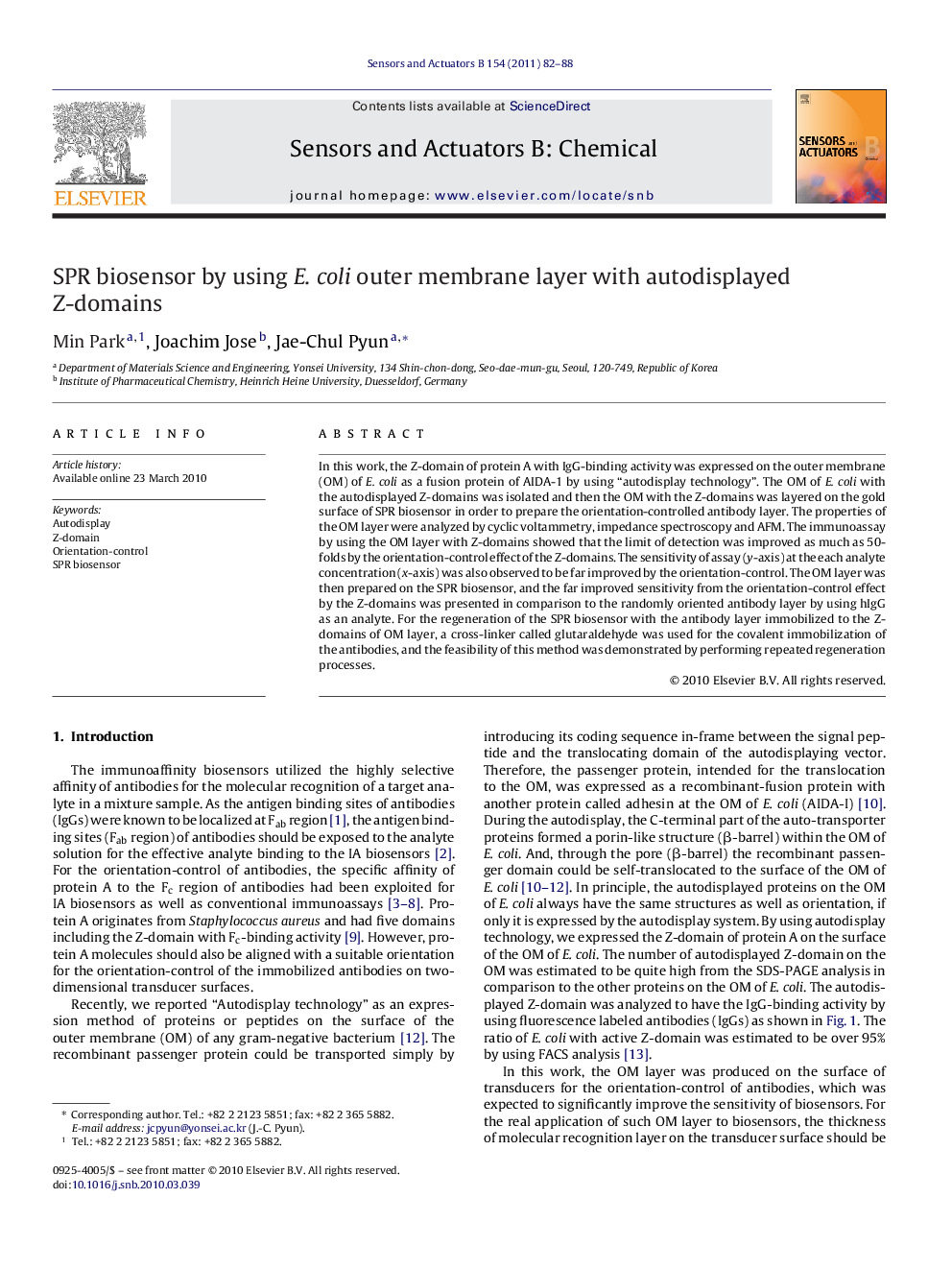| Article ID | Journal | Published Year | Pages | File Type |
|---|---|---|---|---|
| 744434 | Sensors and Actuators B: Chemical | 2011 | 7 Pages |
In this work, the Z-domain of protein A with IgG-binding activity was expressed on the outer membrane (OM) of E. coli as a fusion protein of AIDA-1 by using “autodisplay technology”. The OM of E. coli with the autodisplayed Z-domains was isolated and then the OM with the Z-domains was layered on the gold surface of SPR biosensor in order to prepare the orientation-controlled antibody layer. The properties of the OM layer were analyzed by cyclic voltammetry, impedance spectroscopy and AFM. The immunoassay by using the OM layer with Z-domains showed that the limit of detection was improved as much as 50-folds by the orientation-control effect of the Z-domains. The sensitivity of assay (y-axis) at the each analyte concentration (x-axis) was also observed to be far improved by the orientation-control. The OM layer was then prepared on the SPR biosensor, and the far improved sensitivity from the orientation-control effect by the Z-domains was presented in comparison to the randomly oriented antibody layer by using hIgG as an analyte. For the regeneration of the SPR biosensor with the antibody layer immobilized to the Z-domains of OM layer, a cross-linker called glutaraldehyde was used for the covalent immobilization of the antibodies, and the feasibility of this method was demonstrated by performing repeated regeneration processes.
